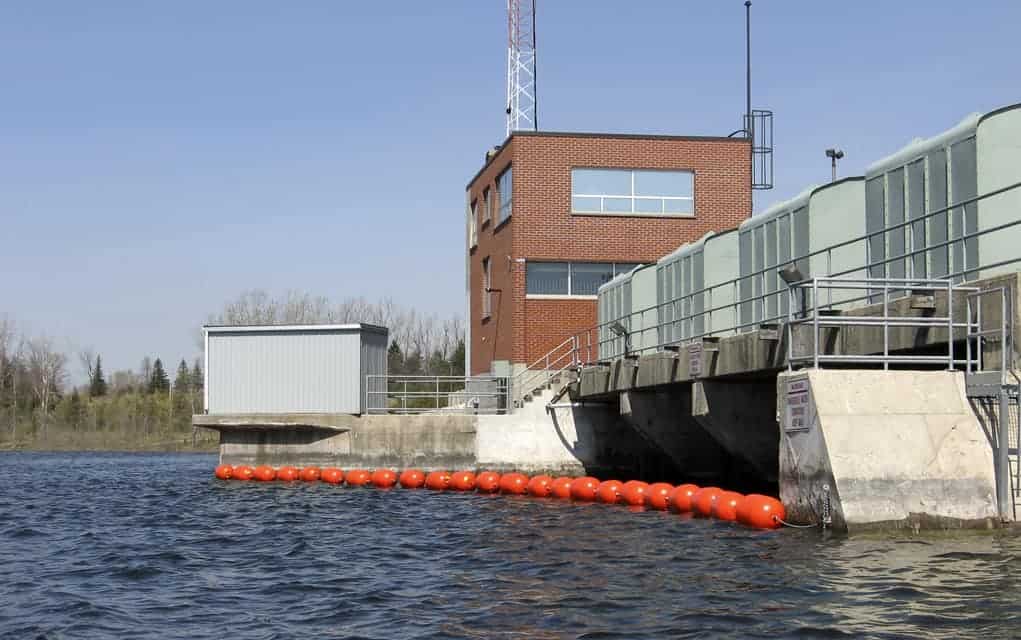This month, the Grand River Conservation Authority has reinstalled equipment and safety measures at the dams they manage, including at Conestoga Lake and Floradale last week.
The project involved the installation of booms and buoys at dams across the region as a safety precaution, warning swimmers, boaters and recreational users to steer clear of the dam and their intakes.
The GRCA’s Lisa Stocco says after two deaths at a dam and the following inquest into the incident, the annual project was implemented.
“The GRCA has been installing these buoys/booms for approximately 15 years. This safety initiative is the result of recommendations that were made in the Parkhill inquest in the spring of 2000,” she said in an email interview. “The inquest was held following an incident that occurred at Parkhill Dam in 1998, where a child tragically died as a result of becoming trapped in an underwater opening in the dam. Later that day, a police officer died while trying to recover the child’s trapped body.”
There are over 100 dams in the GRCA scope, of which the agency owns 28. To decide which dams were slated for the boom-and-buoy installation, the GRCA teamed with Transportation Canada. The safety measures are installed in the spring, and removed in the fall when the recreation season is over. She says the project is money well spent.
“This public safety initiative costs approximately $25,000 annually, primarily in staff time,” she said. “The buoys and booms outline the hazardous areas around the dam. The intention is to make recreational river users aware of the dam and the risk, so that they can avoid the danger. A number of staff spend two weeks in the spring installing the buoys and booms, and then another two weeks in the fall removing them before the winter.”
![Safety booms were put in place at Woolwich and Conestoga dams last week, reminding recreational users to steer clear.[Submitted]](https://www.observerxtra.com/content/images/wp-content/uploads/2016/05/post_news_dam.jpg)
She says the project is all about safety and the GRCA has a message for those that use the waterways around all the dams, not just the 28 the organization runs.
“The GRCA always encourages those that use the waterways to exercise caution. With respect to the safety buoys/booms and signage near dams, the GRCA encourages the public to be aware and to take the warnings seriously,” she said, adding that there is information out there on how to avoid danger in the vicinity of a dam. “The GRCA reminds recreational river users to stay upstream of any navigation marker buoys, and to never boat or canoe near dams where there can be undertows and extreme currents. There are underwater openings in dams that can’t be seen from the surface, and the current near a dam can be very strong, creating an undertow where someone could easily become trapped under the water. The GRCA has produced the River Safety Rules booklet, geared to kids. It will help them stay safe when they are near water, particularly near a dam.”
Installations around the region began in April, but since the beginning of May, the GRCA has had crews making the rounds from Brantford to Cambridge to Elora and this week, were in Guelph, Belwood, Breslau, New Dundee and Baden.









